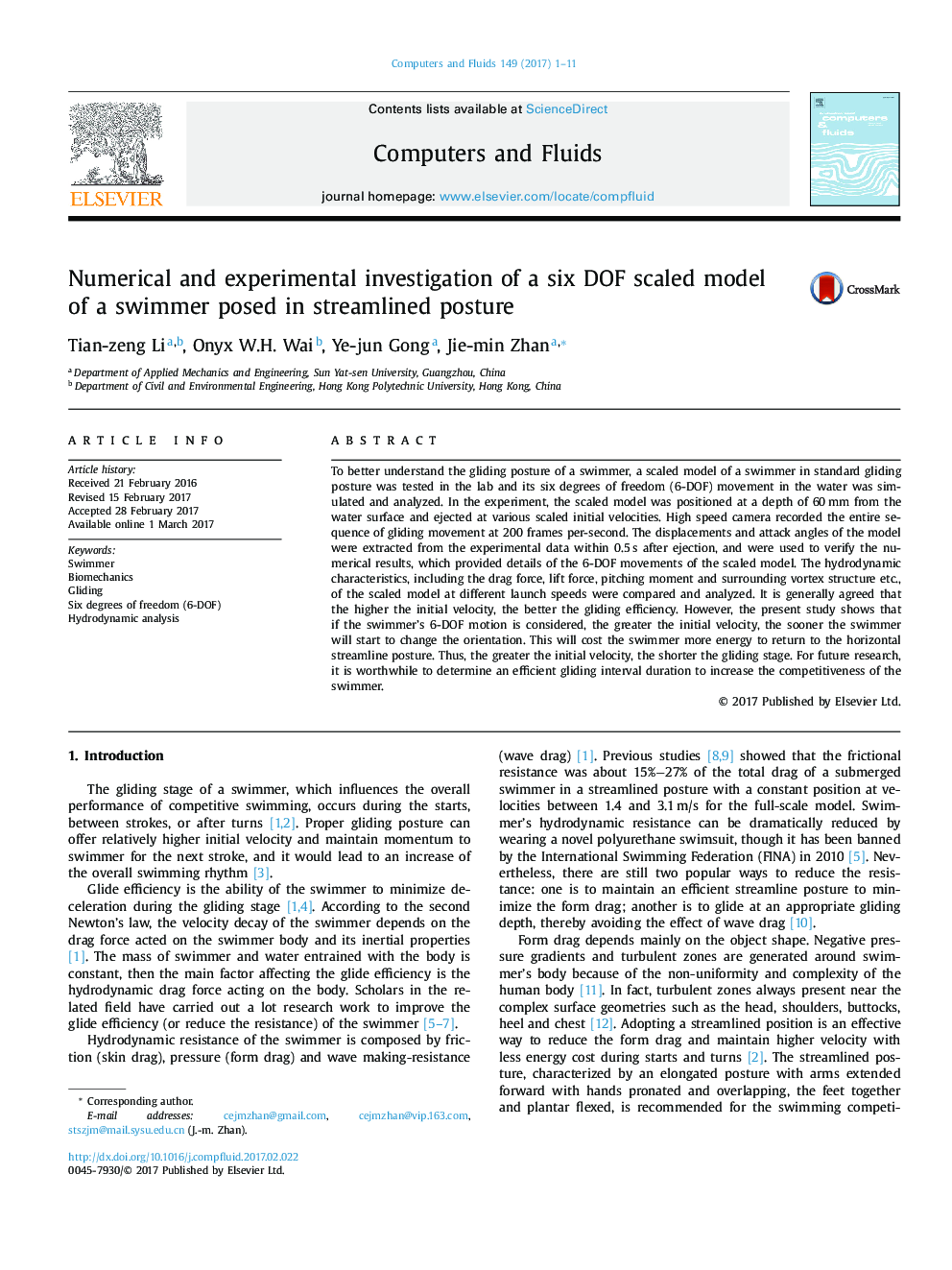| Article ID | Journal | Published Year | Pages | File Type |
|---|---|---|---|---|
| 5011878 | Computers & Fluids | 2017 | 11 Pages |
Abstract
To better understand the gliding posture of a swimmer, a scaled model of a swimmer in standard gliding posture was tested in the lab and its six degrees of freedom (6-DOF) movement in the water was simulated and analyzed. In the experiment, the scaled model was positioned at a depth of 60Â mm from the water surface and ejected at various scaled initial velocities. High speed camera recorded the entire sequence of gliding movement at 200 frames per-second. The displacements and attack angles of the model were extracted from the experimental data within 0.5Â s after ejection, and were used to verify the numerical results, which provided details of the 6-DOF movements of the scaled model. The hydrodynamic characteristics, including the drag force, lift force, pitching moment and surrounding vortex structure etc., of the scaled model at different launch speeds were compared and analyzed. It is generally agreed that the higher the initial velocity, the better the gliding efficiency. However, the present study shows that if the swimmer's 6-DOF motion is considered, the greater the initial velocity, the sooner the swimmer will start to change the orientation. This will cost the swimmer more energy to return to the horizontal streamline posture. Thus, the greater the initial velocity, the shorter the gliding stage. For future research, it is worthwhile to determine an efficient gliding interval duration to increase the competitiveness of the swimmer.
Related Topics
Physical Sciences and Engineering
Engineering
Computational Mechanics
Authors
Tian-zeng Li, Onyx W.H. Wai, Ye-jun Gong, Jie-min Zhan,
